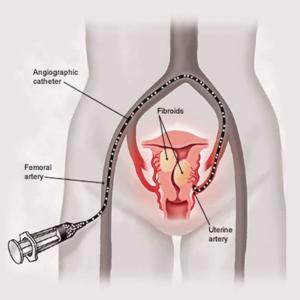
Does Insurance Cover Fibroid Removal?
One of the most frequent questions patients ask after being diagnosed with fibroids is: “Does insurance cover fibroid removal?” or “how much does fibroid treatment cost?” If you suffer from the debilitating symptoms of uterine fibroids, paying for treatment is the last thing you need to worry about. To help ease the mind of those in need of fibroid treatment, it is good to note that most health insurance companies will cover fibroid removal. There may be some circumstances regarding how individual insurance providers will have their own policies regarding which procedures are covered and qualifying criteria, how much coverage is provided, and your designated co-pay. We will explain more in the blog, but our team of insurance specialists are available to answer any questions you may have.
Understanding your fibroid condition and symptoms can help you have a more productive conversation with your insurance provider about fibroid treatment coverage.
Step 1: Recognize Fibroid Symptoms
A good place to start before reaching out to see if your insurance provider covers fibroid removal is to understand if your symptoms are being caused by fibroids.
Uterine fibroids are noncancerous tumors that grow in or on the uterus. These growths can range in size from a small pebble to as large as a watermelon. Fibroids can be singular or grow in clusters. The size, number, and location of your fibroids can affect which symptoms you experience, along with their severity. Fibroids may be causing any of the following symptoms:
- Menorrhagia (heavy or prolonged bleeding during the menstrual cycle)
- Bleeding in between periods
- Cramps
- Pain during sex
- Frequent urination
- Swollen stomach due to an enlarged uterus
If you’re unsure or concerned about your symptoms, we are here to help. Our online scheduling tool also allows you to input your location and insurance provider and will show you our nearby clinics that accept your insurance prior to confirming scheduling.
SCHEDULE A FIBROID CONSULTATION TODAY
Step Two: Confirm Your Insurance Coverage for Fibroid Treatment
Our team will also work with you every step of the way to maximize your insurance benefits, and will help complete the necessary documents to get approval from your insurance company.
Insurance Coverage for Fibroid Treatment
While deciding on the appropriate treatment, it is helpful to consider a second opinion, especially if only surgical options such as a myomectomy or hysterectomy are recommended.
Most insurance companies along with Medicaid and Medicare cover uterine fibroid embolization (UFE). Important questions to ask your health insurance provider about treatment options include:
- Is a physician referral required for a consultation?
- Is prior authorization required for imaging that might be needed for diagnosis?
- Is the provider in-network?
If you’re concerned about the qualifying criteria of your insurance to undergo UFE, we want you to know that at USA Fibroid Centers we provide insurance information and will work with your insurance company to determine your health plan’s coverage and discuss cost when we schedule your procedure. We want you to have all the information needed to make an informed decision about your health.
At your initial consultation, you will get the chance to discuss the costs and insurance coverage for fibroid treatment. From there, your doctor can make an informed recommendation based on your condition requirements. It’s important to call before your visit so we can connect with your insurance provider and walk you through everything you need to know about your coverage.
Check IF Your Insurance COVERS Fibroid Treatment
Does Insurance Cover UFE?
Most insurance providers cover Uterine Fibroid Embolization (UFE) as a treatment for fibroids because fibroids impact fertility and can cause severe and painful symptoms. The type of procedures covered and how much the insurance provider will pay varies based on the provider and your specific policy. Common factors affecting the amount of treatment cost covered by insurance may include:
- Whether the doctor or clinic falls in your health insurance provider’s network. Some out-of-network doctors may require you to pay a higher percentage of the associated costs.
- Whether you have to meet a deductible.
- Whether you are entitled to a copay or coinsurance which means the insurance will cover a certain percentage of the cost and you have to pay the rest.
During your first appointment, we will go over the UFE procedure and answer any questions you may have. If your procedure is not covered by insurance, or if you are not yet enrolled in a medical insurance plan, the financial specialists at USA Fibroid Centers will review any financial contribution that you might have to make. We provide other payment and financing options such as CareCredit and self-pay to facilitate your fibroid removal journey.
Use our online scheduling tool to see if your insurance is accepted and find the fibroid center closest to you.
Can I Have UFE Without Insurance?
USA Fibroid Centers understands that living with fibroids and their painful symptoms can prove to be a turmoil for most women. No woman should have to suffer in silence when there is a safe and minimally invasive treatment option available. If you do not have insurance coverage or if your policy does not cover UFE, our insurance specialists will work with you to create a payment plan to suit your financial needs.
More Questions? Talk to a Fibroid Specialist Now
Step Three: Get a Fibroid Diagnosis & Treatment Plan
Imaging is the primary way to diagnose uterine fibroids. The two most common imaging modalities used are ultrasound and magnetic resonance imaging (MRI).
Ultrasound is a safe and painless procedure that uses sound waves to create images of the uterus. It is the first-line imaging test for fibroids and is usually performed transabdominally (through the abdomen) and transvaginally (through the vagina). Transvaginal ultrasound provides better images of the uterus and ovaries than transabdominal ultrasound.
MRI is a more expensive and time-consuming imaging test than ultrasound, but it provides more detailed images of the uterus and surrounding tissues. MRI is particularly useful for diagnosing fibroids that are difficult to see on ultrasound, such as submucosal fibroids (fibroids that grow inside the uterine cavity) and intramural fibroids (fibroids that grow within the uterine wall).
Imaging can be used to diagnose fibroids of all sizes and locations. It can also be used to assess the severity of fibroids and to monitor the effectiveness of treatment.
It’s important to talk to a fibroid specialist as they can provide proper test, diagnosis and personalized treatment plan if needed.
Find a Fibroid Specialist Near You
Uterine Fibroid Embolization Benefits

USA Fibroid Centers offers Uterine Fibroid Embolization (UFE), a non-surgical fibroid treatment that involves shrinking the fibroids, rather than removing them through invasive methods. UFE uses embolic agents to cut off blood supply to the uterine artery feeding the fibroids, causing them to shrink and die. The procedure is also FDA-approved and recognized by the American College of Obstetrics and Gynecology (ACOG) as a safe and effective treatment for symptomatic fibroids. The average success rate of UFE, according to the National Library of Medicine (NIH), is 95%. UFE is an outpatient procedure
preserves your uterus, and can free you from suffering from painful symptoms.
UFE is an outpatient procedure that has the additional benefits:
- Short recovery time and less cost due to avoiding the hospital
- Preserves the uterus for chance at future fertility unlike a hysterectomy
- Unlike a myomectomy that requires a C-section after the procedure, a vaginal delivery is still an option.
- Less side affects than invasive measures
- Treating multiple fibroids at once with multiple sizes
Step Three: Get Treatment for Fibroids At USA Fibroid Centers Today
We are here top help you navigate if your insurance covers fibroid removal. Our fibroid specialists can recommend a care plan based on your diagnosis and unique circumstances. Our team will also work with you every step of the way to maximize your insurance benefits, and will help complete the necessary documents to get approval from your insurance company.
Schedule a consultation online or give us a call at 855.615.2555 to set up an appointment. Let us help you begin enjoying life again.



